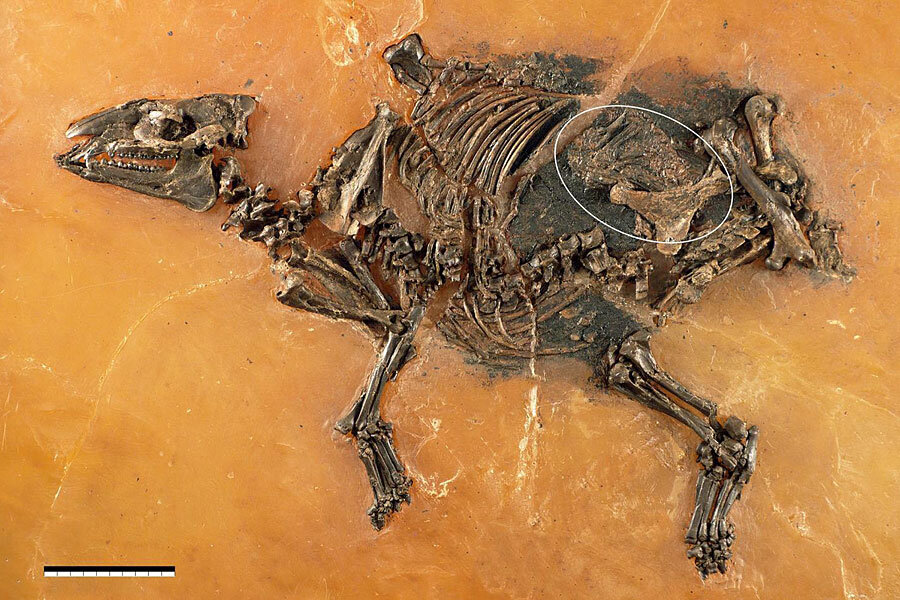What can a 48-million-year-old horse uterus teach us about ourselves?
Loading...
When researchers unearthed the remains of a 48-million-year-old mare, they got more than they bargained for.
The horse was pregnant when it died. The fetus still rests in the ancient equine uterus.
But the fetus wasn’t alone. The placenta surrounding the unborn foal was also preserved.
This placental specimen is a historic find, according to a study published Wednesday in the journal PLOS ONE.
“It is the oldest record of that structure which we have at hand today,” says study author Jens Lorenz Franzen, a mammalian paleontologist from Senckenberg Research Institute in Frankfurt and Naturhistorisches Museum in Basel, Switzerland.
“The excellent preservation proves that the uterine system of mammals developed at the latest during the Paleocene more probably already during the Mesozoic,” the study authors write in the paper. That means that mammals could have carried their young in nutritious placenta hundreds of millions of years ago.
Researchers discovered the ancient placenta after noticing a dark spot in the fossilized mare. This dark spot was consistent with other soft body tissue preserved in specimens from the same dig site. But that wasn’t enough to indicate placenta.
Instead, it was a wrinkling feature that suggested that that tissue was an ancient uterus. When amniotic fluid escapes the uterus of a modern horse, this same wrinkling appears on the outer wall of the uterus.
The researchers confirmed the presence of placenta by using scanning electronic microscopy. They looked at bacteria that had played a role in the preservation of the soft tissue.
This ancient mare died near the end of her pregnancy, but the scientists don’t think she died from complications during birth.
This horse, Eurohippus messelensis, was discovered at the Messel archeological dig site near Frankfurt, Germany. More than 16 nearly complete skeletons of early horses have been found at that site. “That’s really a treasure trove for paleontologists,” says Dr. Franzen in an interview with The Christian Science Monitor.
Although the mare’s uterus seems to be remarkably similar to those of today’s horses, these ancient equines were quite unlike modern-day horses overall.
“They are much smaller and their bodies looked similar to that of antelopes of today,” says Franzen.
The Messel horses had a diet largely consisting of leaves, but also seeds and fruits.
“Looking back into the past is interesting in every case, whether it is human history or it is the history of life on Earth,” says Franzen. “Getting information of this kind, which really tells something about life many millions of years ago on Earth – isn’t that fascinating?”








